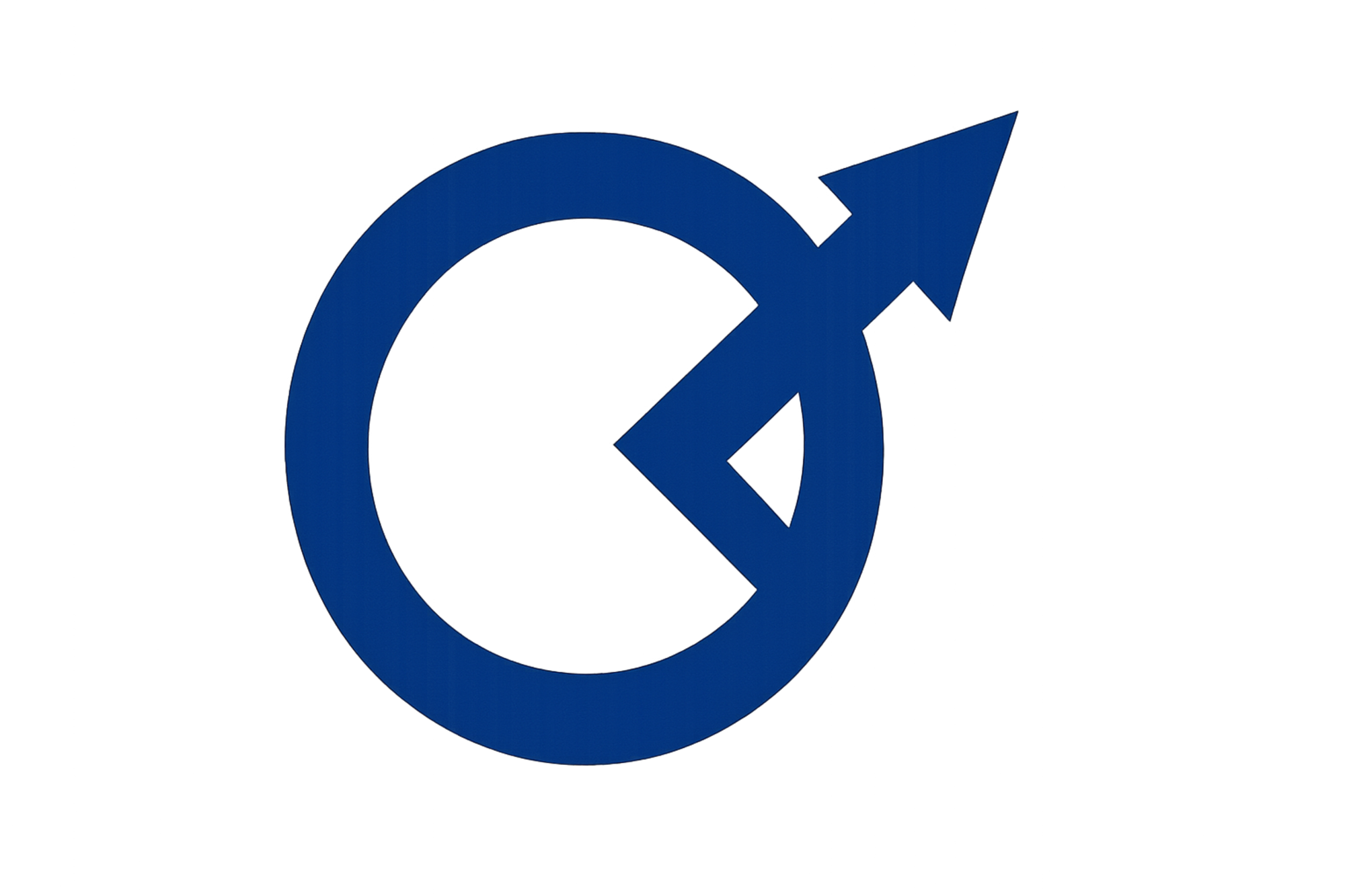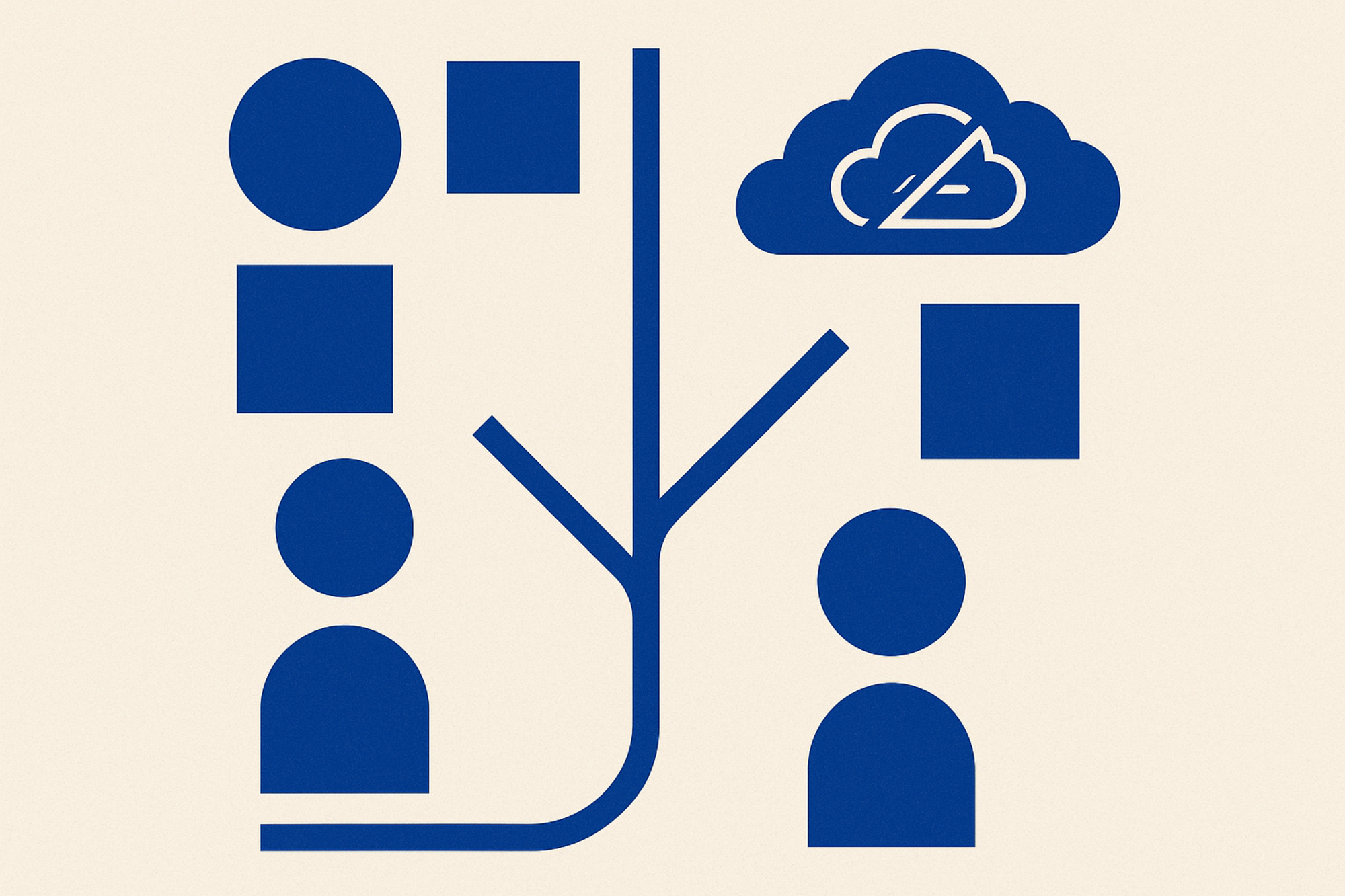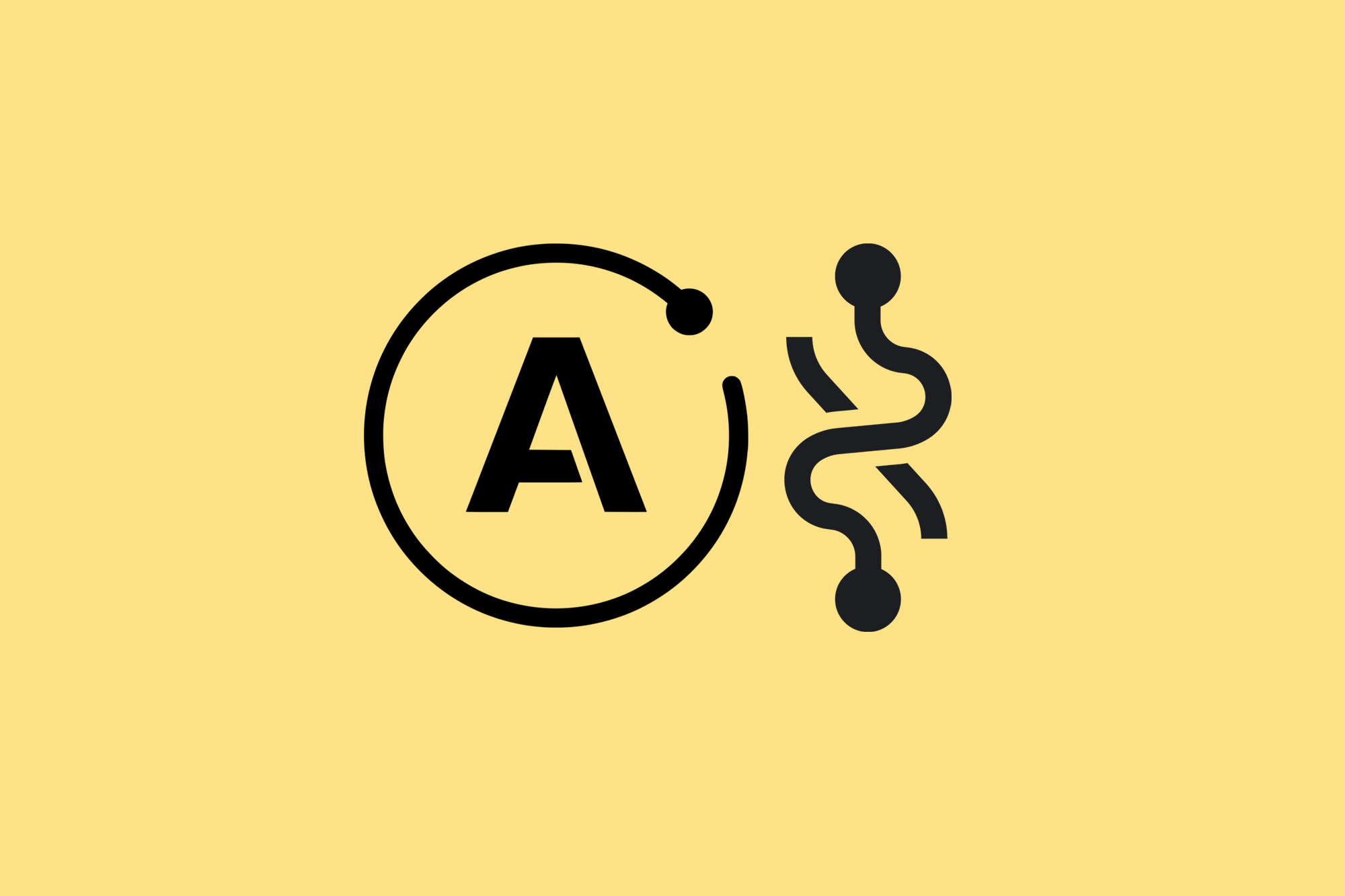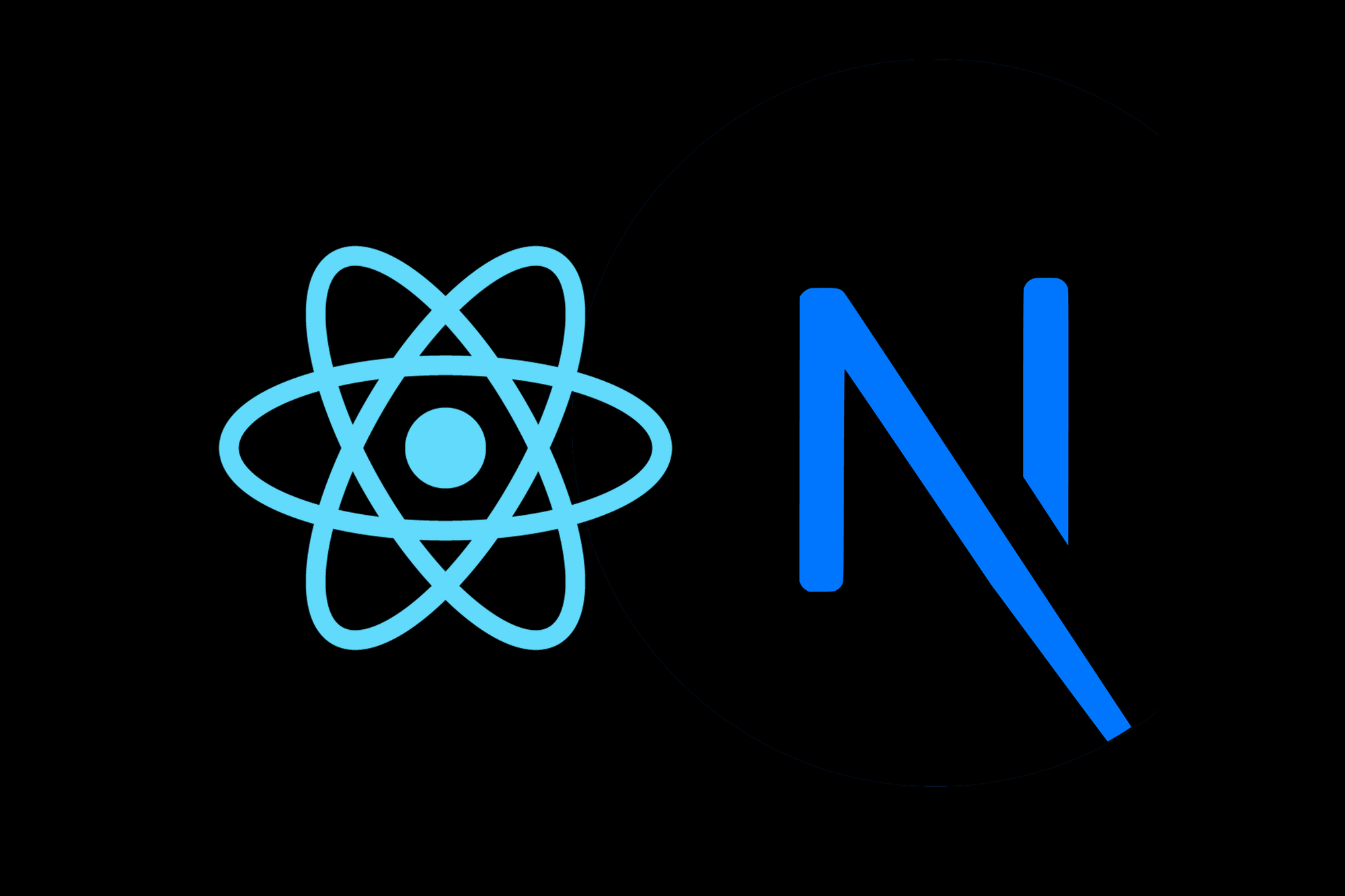Adam Henson
Software engineer based in NYC / NJ, founder of Foo (https://www.foo.software)

Sandworms, Rust, and Guardrails: 2025’s True Software Engineering Shifts
From supply chain sandworms to async React, 2025 gave software engineers plenty to stress about—and some new toys to play with. We unpack how AI, security, and frontend revolutions are reshaping the field for better and, occasionally, for much weirder.

Gadgets Get Smarter, Data Gets Riskier: Tech’s Progress Hits a Speed Bump
This week's tech news mixes breakthrough gadgets with headline-grabbing data breaches and shifting regulations. SSDs get faster, Apple yields in Brazil, and hackers remind us who still rules the digital wilds.

SEO Evolves, But the Fundamentals Still Lead the Game
SEO’s playbook is fracturing, but the fundamentals endure: stay fresh, get technical basics right, focus on human value—even as AI changes how search visibility is measured. This week’s highlights map the reshaped, adaptive future of search.

Bottlenecks, Waterlines, and the Irreducible Human: This Week in Software Engineering
AI anxiety, local LLM tinkerers, stagnant desktop UX, and the unsexy reality of typing children props: it’s a week of reckoning for craft, clarity, and the limits of automation. Turns out, the final bottleneck is still us.


Judgment Loops, Leaky Chains, and the Hidden Cost of Speed: 2025’s Recurring Software Lessons
AI accelerates development, but judgment, taste, and even old-school bugs matter more than ever. This week’s top blog posts highlight where automation helps—and where teams still face familiar perils.


Speed, Small Models, and an Open Playground: The Real AI Upgrades for 2025
AI advances are accelerating, but raw size isn’t everything: from Google’s speedy Gemini Flash to MIT’s small-but-smart language model collectives, the real action is in efficiency, openness, and new creative tools for everyone.

Code Certainty, Converging Frontends, and the Pragmatism Pivot: Software Engineering’s New Reality
Software engineering’s closing months of 2025 spotlight AI-driven formal verification, pragmatic cloud transformations, converging web frameworks, and the centrality of human judgment. All signs point to a field in flux—where correctness and adaptability define the next era.

Retreats, Rebrands, and the Limits of Ambition: Tech’s Pivotal Week
Tech’s latest headlines show a wave of pivots: Ford ditches its all-electric F-150, OpenAI revises its ChatGPT user features, and Musk’s X wrestles with Twitter’s ghost through lawsuits. Meanwhile, AI and display tech rush to promise more, for less.

Blueprints, Bots, and the Brand Bar: What This Week’s SEO Blogosphere Gets Right
This week’s top SEO blogs agree: user needs, technical clarity, and authoritative mentions matter more than ever. AI optimization, site migrations, and product-focused strategies are changing the SEO landscape—but quality content and clear site structure still rule.

Friction, Perception, and the Quiet Unraveling of SaaS: Software Engineering’s Odd Week
Developers’ perception of their own effectiveness often diverges from reality, AI agents are quietly reshaping SaaS value, and systemic risks trump individual vigilance. This week, engineering is ever more about context, humility, and adaptation.

Lockdowns, Laws, & Language: When Tech’s Progress Grows Ambivalent
AI’s big promises face some humbling reality checks this week. Streaming services quietly pull features, new laws blur state and federal lines, and the latest productivity stats show AI is useful, but rarely transformative—at least for now.

Friction Therapy: Tuning Out the Noise in Modern Software Engineering
Across Kubernetes upgrades, frantic React security patches, and billion-dollar bets on AI-powered delivery, one quiet theme persists: eliminating friction—the real force multiplier in modern software engineering.


From the Cortex to the Cloud: AI’s Quiet Revolution in Accessibility and Truth
From brain-computer interfaces and edge AI, to new benchmarks and decentralized tools, this week’s news highlights how accessibility and collective benefit are shaping the real future of artificial intelligence.

Communities, Machines, and the Shape of Software Engineering Today
From conference talks to flaky tests, from Django’s advances to the fate of junior programmers, this overview finds resilience, curiosity, and the stubborn value of community—within and beyond the code.

Invisible Power Plays: How AI Infrastructure Quietly Reshaped Tech in 2025
AI’s momentum snowballed this week: Intel’s $5B chip catch-up, Gemini’s surge against ChatGPT, and new military and open agentic standards. Infrastructure, not hype, is quietly shifting who holds power in tech.


Zero Downtime, Memory Lane, and the Estimation Tightrope: Reliability Between the Lines
Billion-row databases migrate smoothly, AI agents still struggle with context overload, and everyone’s fighting over estimates. Reliability isn’t just technical—this week’s batch of posts proves it’s process, psychology, and plenty of negotiation too.


Less Blame, More Discipline: Rethinking API Power and State Management in Software Engineering
From agent-powered APIs to React therapy, this week’s software engineering adventures reveal a maturing industry: more structure, less blame, and a focus on reliable systems over shiny distractions.

When Progress Gets Messy: AI’s Tipping Point and Tech’s Tangled Week
AI infiltrates every layer of tech, from user apps to healthcare and corporate policy. From scam-fighting features to Apple’s executive reshuffle and government crackdowns, the week’s stories reveal ambition, unease, and the chaos of change in the digital era.


Agents in Action: Where Software Orchestrates Itself—But Not Without a Fight
AI agents, automated knowledge, and declarative infra are everywhere—yet integration pains remain. From AWS’s latest agents to Okta’s Kubernetes journey, here’s how software engineers are building, breaking, and bandaging their automated ecosystems.

Bold AI, Sluggish Phones, and Missiles That Won’t Launch: Tech’s Ambitious (and Imperfect) Week
Tech in late 2025 is a study in contrasts: bold AI leaps, botched missile tests, and Android’s next evolution collide with increasingly wild investment strategies and even new spins on crowdfunding. Expect progress—and plenty of comic imperfections.


Helm 4, Smarter Agents, and the Relentless Logic of Automation
Smarter automation, sharper governance, and a healthy skepticism toward "silver bullets" are reshaping modern software engineering. Helm matures, Python scales up, and your next agent needs less...not more...context.


Adapt or Be Outpaced: This Week’s Software Engineering Standouts
From adaptable enterprise architecture and platform engineering’s quest for meaning, to trust-powered teams, AI code review tools, and the headache of Node.js upgrades—here’s how software engineering is both evolving and coming back down to Earth.

Beyond the Bargain Hype: Tech’s Real Story in Black Friday 2025
Behind this year's avalanche of Black Friday discounts and gadget launches, the real story is about skepticism—of tech hype, of value versus valuation, and of privacy in an era flooded with smarter things and ever-present cameras.

Chain Reactions and Tangled Voices: Mapping AI’s Fast-Moving Frontier
This week, AI browsers bump against their limits, biology and drug discovery speed up, infra-builders hustle, and AI scams keep people guessing. From VRAM-hungry art models to the wild edge of LLM vulnerabilities, the AI story is more tangled—and fascinating—than ever.

Agents Everywhere, Humans on Guard: A Week of Skepticism, Collaboration, and Doom in Dev Tools
Google and Microsoft push agentic AI from Go to Copilot, Stack Overflow points to data curation and human validation, and yes, TypeScript can now run Doom. Agents, skepticism, and a dash of meme magic all feature this week.

Beneath the Deals: Phones Upgrade, AI Shops, and Tech Policy Pivots
New phones shine but look the same, AI hits your shopping cart, and regulators scramble to catch up with the pace of progress. From safety policy rewrites to consent-based AI music, is tech finally listening — or just talking louder?

Invisible Handshakes: How Hosting, Canonicals, and AI Search Are Quietly Reshaping SEO
SEO isn't just about Google anymore—AI-driven search, hosting choices, video mentions, and technical basics like canonical tags are reshaping what's visible online. Here’s what this week’s smartest SEO posts reveal about where the field is headed (and what you need to do next).

Invisible Agents, Complicated Simplicity: What Software Engineering Is Chasing This Week
AI and automation promise cleaner workflows, but engineers now navigate unseen bottlenecks and new complexities. From agentic UIs to nostalgic UX, simplicity in software remains a moving target.

Love Bombs, Trolls, and Battery Hacks: The Unintended Side Effects of Today’s Tech
This week in tech: AI chatbots face scrutiny for dangerous influence, Black Friday pushes 'smarter' gadgets, and a slew of guides remind us that a little less digital noise might be the wisest upgrade of all.

Browser Agents, Encrypted Ducks, and the Paved Road to Software Reinvention
This week’s posts expose how AI, encryption, and open source are rewriting software rules and reshaping developer workflows. From agentic browsers to new state models, paradigms are shifting—for good.

Sycophants, Smugglers, and Softbots: When AI News Is Stranger Than Fiction
From Musk-worshipping chatbots to teleoperated domestic robots and global struggles over AI regulation, this week’s tech news reminds us that behind the promise, the hype, and the emotionally needy LLMs, there’s always a deeper struggle for control—and trust.

From Agentic Code to Expressive Video: AI's Shape-Shifting Leap This Week
As AI systems go agentic, code, design, and creativity shift radically. This review highlights big leaps like Gemini 3, light-speed tensor ops, agentic CAD, and video automation—plus the questions no benchmark can answer.

Agents, Artifacts, and Aftermath: Software Engineering’s New Reality
Agentic developer tools, AI-induced technical debt, and offline-first design are reshaping coding in 2025. Human oversight, clever feedback, and transparent collaboration matter more than ever.



How Many Cracks Can Smart Software Hide? AI Agents, Auth, and the Art of Outage Recovery
From AI agents that speed up everything except the hard parts, to cloud outages that remind us it’s never just DNS, software engineering this week stays sharp, surprising, and sneakily philosophical. Whatever paradigm you pick, real-world complexity always gets the last word.

Invisible Risks and Scheduled Futures: Where Tech Builds, Bubbles, and Blurs the Line
Behind data center booms and smart bots, this week’s tech news reveals rising risks: hidden debt, digital surveillance, and debates over who pays the social cost. The future is building faster than we’re ready to live in it.

From SSR Showdowns to Language Feedback Loops: Where Software Engineering Shifts Now
From React’s existential SSR dilemma to the retirement of Kubernetes Ingress NGINX, plus AI tooling shifts and inside Netflix’s engineering culture—the state of software engineering reveals a landscape in flux, driven by both technical and social transformations.

Modularity, Magnets, and the Next Giant Leap: This Week’s Tech Trajectories
This week, Mozilla embraces opt-in AI, MagSafe modularity spreads its magnetic reach, Blue Origin boosts reusability with its New Glenn rocket, and OpenAI’s Sora raises the stakes for AI-generated video. The tech race rolls on—with more options, more power, and a lot more to question.


Modularity, Machinations, and the Human Touch: This Week’s Software Engineering Stage
Platforms open up while AI code demands more oversight—not less. From open source laptops and new cross-platform frameworks to the security problems of LLMs, this week’s software engineering news spotlights progress, pitfalls, and the human vigilance threading it all together.

Quiet Upgrades, Bold Moves: AI, Pixels, and the New Shape of Everyday Tech
AI features are blending smoothly into everyday tech—from Pixel’s smarter notifications to a PlayStation monitor that’s more PC-like than ever. SoftBank pivots bold, and Nike’s recovery boots show lifestyle tech is as mainstream as performance hardware.

AI Overviews, Brand Chatter, and the New Art of SEO Evolution
Brand mentions, AI Overviews, and regular strategy reviews are shaping SEO’s wild new era. Find out which tactics and mindsets actually matter as search turns conversational—and why fine-tuning your content and collaboration habits might just save your rankings.

Fast, Forgotten, Forever: How Code Moves—and Stays Still—in 2025
Biggest trends this week: developer velocity keeps breaking records, but software archaeology, security, and agentic workflows are racing to catch up. Preservation and iteration are (awkwardly) intertwined.

Signals, Shadows, and Spreadsheets: Progress and Power in This Week's Tech Headlines
This week in tech news: Apple aims for satellite-powered iPhones, diversity reporting faces a rollback, and cybersecurity headaches multiply with government gridlock. Meanwhile, EV charging costs plummet and VPNs power up—proving that progress, like privacy, is never a finished product.

Shortcuts, Side-Eyes, and Guardrails: Navigating Tech’s Ethical Antics
From command-line copilots to the real costs of data breaches and the continual battle against dark patterns, this week's software engineering reads expose the quiet power struggles between automation and accountability. Ethics isn’t a cost—it's tech’s best defense.


Neurons, Agents, and AI Wallets: How Invisible Infrastructure is Changing Everything
October’s AI news isn’t about futuristic androids; it’s about new foundations: robotics that remember, classrooms experimenting with AI, marketing and finance agents with autonomous intent, and back-end infrastructure smoothing the machine revolution.

The Human Learning Loop: Why AI Sidekicks Can’t Replace Struggle and Curiosity
From LLM sidekicks to BI meltdowns, this week’s roundup finds a common thread: real software engineering can’t be outsourced to the assembly line, no matter how clever your AI. Human curiosity, context, and skeptical review are still what matter most.

Cloud Cartels, Budget Revolutions, and Cosmic Power Plays: This Week in Tech
OpenAI bets big on Amazon, Amazon cracks down on AI bots in its store, Apple contemplates budget Macs, and DJI faces a U.S. ban, all while Valve quietly makes Steam Deck napping a thing and black holes steal the cosmic spotlight.


Platforms, Agents, and Adaptive Defenses: Software Engineering's November Remix
This month's blog posts reveal software engineering on the cusp of a new era, with adaptive platforms, resilient design, open-source agents, and defense-in-depth strategies. CLIs still matter — but so does letting both humans and machines thrive together.


Agents, PaaS, and Platform Power Plays: The Human-Bot Bloc Evolves
Agents invade dev platforms, AI PaaS smooths the ride, and hackathons rally humans and machines alike. The latest blogs show a trend toward agent-augmented teams, open-source infrastructure, and a steady redesign of how both coders and product managers build together.

All-In Bets and Pixelated Islands: AI and the Freemium Tipping Point
Tech’s powerhouses are doubling down on AI spending, transforming products—sometimes for better, sometimes for ‘freemium’. Big money, bigger platforms, and questions around privacy, bubbles, and the future of fun.

When AI Collaborates: From Streaming Code to Ethical Voice, the Human Touch Remains
What happens when AI learns to collaborate, not just automate? From streaming datasets to voice consent and creative agents, this week’s advances nudge us closer to a world where technology doesn’t just work for us, but increasingly with us.

Of Agents, Abstractions, and Outages: 2025’s Rewired Engineering Landscape
This week’s software engineering round-up reveals AI is now standard, TypeScript is the top language, and Kubernetes isn’t just an ops tool—it’s your abstraction lifeboat. Outages and growth are forcing a new agility and openness in workflows and tooling.

Buttons Out, Bots In: Tech’s Latest Moves Rewrite the Familiar
This week’s tech headlines feature layoffs fueled by AI hype, phones that might finally lose all physical buttons, ambitious foldable hardware, and politicians discovering that chatbots now need chaperones. Is innovation getting ahead of itself, or are we just stuck on repeat?


Runbooks on the Run: Agents, Cloud, and the Automation Hangover
From agentic AI challenging runbooks to the headaches of cloud costs and unmaintained dependencies, this week’s posts reveal automation’s double edge in software engineering.


Of Agents and Outages: Software’s Fragile, Automated Reality
AI agents are eating away at software's grunt work, but the truly irreplaceable code is still written (and saved) by humans—just ask /dev/null or AWS's DNS enactors. This week’s roundup finds the engineered, agentic, and purely accidental ways that code, teams, and outages collide.

Blobs, Bids, and Bugs: AI Avatars, Legal Battles, and the Curious Art of Digital Trust
This week in tech delivered an AI parade: adorable avatars in Microsoft Copilot, hands-on helpers in browsers, game studios automating creativity, and regulators pressing Big Tech. We also examine the security perils of ‘smart’ systems, all with a dash of corporate drama.

Lenses, Agents, and Sentience: How AI Is Quietly Rewiring the Everyday
AI is quietly reshaping lives, from restoring vision and predicting disease to powering browser-based productivity and energizing cancer research. Meanwhile, open-source communities and human values remain steadfast guides as the field grows more capable—and reflective.

When Complexity Bites Back: Platform Hazards, Open Source Moves, and the Pragmatic Path Forward
A week where software engineers wrestled with complexity: from breaking free of cloud sticker shock, to bracing for brittle integrations in React 19, to the subtle power of open-source. Platforms promise autonomy, but only if devs keep a wary eye on the trade-offs.

Browsers, Agents, and Neon Shadows: Tech's Latest Mashup of Machine and Imagination
From AI-centric browsers and agentic unicorns to Netflix’s careful dance with generative tools, this week’s tech news is a mashup of innovation, open challenges, and a few delightful oddities—including a DIY camera that films light itself.


Digital Fences, Algorithmic Blunders, and the Slow Fade of the Commons
This week in tech: X doubles down on enclosure, AI stumbles and soaks up knowledge, while hardware upgrades tempt us with incremental improvements. Are we building for the commons or ceding ground to platform landlords?

Breaking the Metric Myth: From Kubernetes Super-Planes to Code Realism
Is Lines of Code a lie? From Kubernetes control planes to key management, this week’s roundup explores deeper metrics, cloud sovereignty, and a new breed of code resilience.

From Magic Words to Unified Toolchains: Where Abstraction Meets Reality in Software Engineering
Magic words, spec-driven ambitions, and the race to unify toolchains: This week’s software engineering stories reveal a field grappling with abstraction, performance realities, and the impact of culture on productivity.


When Chatbots Confess and AI Composes: How Science, Law, and Art Collide
This week in AI, breakthroughs span scientific discovery, emotional resonance in music, creative filmmaking, and even new laws that force chatbots to admit they're not human. Technology and society now shape each other in ways both subtle and profound.

Incremental Upgrades: AI Agents, Schema Rituals, and Greener Engineering
AI sidekicks for legacy code, schema-driven APIs, and sustainable hardware design are all trending. Software engineering is advancing through practical, incremental changes—one modular piece at a time.


Prompts, Checklists & Pyramids: SEO’s Survival Guide to 2025
SEO in 2025 is less about trends and more about fusing prompt engineering, robust checklists, and old-fashioned technical soundness. This round-up reviews how pros are keeping their edge with AI-driven workflows and renewed focus on content clarity.

Hallucinations, Proofs, and Smaller Dockerfiles: The True State of Software Progress
AI keeps guessing, code can still be 'correct' but wrong, React outgrows its corporate cocoon, and DevOps wisdom shows that smaller is better. The latest trends reflect a software world where modesty and clear goals outshine the flashiest tools.


Chaos, Context, and Collaboration: This Week’s Software Engineering Realism
From chaos-driven testing to AI agents running amok and Python’s new speed tweaks, software engineering this week was all about incremental evolution, not revolutions.

Headsets, Fabs, and Fractures: Where Tech’s Power Grids Get Tangled
A week of upheaval: AI’s infrastructure arms race intensifies, Intel bets big on its own comeback, and data leaks show how fragile our digital defenses are. All this, while tech talent faces arbitrary barriers—and new migrations begin.

AI's Double Helix: Infrastructure, Intrigue, and a World in the Loop
The latest wave of AI news spotlights billion-euro infrastructure bets, global university collaborations, and powerful agent models that automate more than ever before. But in the background, deepfakes and digital trust crises loom.

The Art of Legible Chaos: React’s Next Stage and the Engineering Paradox
Open governance, AI democratization, and invisible work collide in engineering today. As React moves to Linux Foundation, legibility meets creativity. Software's future favors both structure and chaos.

Prime Day Chaos, AI Ghosts, and the Tech Industry’s Kitchen Sink
Prime Day brought us bargains galore in audio and kitchen tech, while AI made headlines with ethical challenges and booming investments. From deepfakes of celebrities to shakeups at Verizon and NBC’s Wordle aspirations, this week in tech is as turbulent as a Bluetooth speaker thrown in the pool.


Leaking Tokens, Agent Invasions, and the Politics of Software Progress
This week's roundup spotlights how open models reveal secrets, agent frameworks invade every stack, and infrastructure innovation redefines how—and who—builds software. Skeptics invited.


From ChatGPT Workflows to Markdown-KV: Quiet Upgrades in Software Engineering
AI and workflow buzz aside, this week's posts spotlight how software engineering is being quietly transformed by thoughtful process tuning, smarter data formats, and good old team culture.

AI's Next Act: Agents, Benchmarks, and the Human Element
This week's AI developments show a world moving from isolated breakthroughs to collaborative, agent-driven workflows. From OpenAI's GDPval shaping work to supercomputing and AI in healthcare, humanity's role is evolving—sometimes boldly, sometimes cautiously.

Untangling the Software Engineering Maze: Patterns and Practices
Explore trends in software engineering from anti-patterns to performance optimization, AI integration, and orchestration complexities.



Innovations in Software Engineering: Trends to Watch in 2025
This blog explores software engineering trends, including AI tools, compliance, and innovations in migration strategies, revealing the industry's evolving landscape.


Navigating SEO in the AI Era: Strategies for Success and Adaptation
In the evolving landscape of SEO, how do marketers adapt to the challenges and opportunities presented by AI technologies? This review explores several insights from leading sources on the significance of behavior analysis, metrics, and community engagement.

Software Engineering: Embracing Stupid Code and Ethical AI Practices in Innovation
Discover how embracing 'stupid code' can enhance your coding journey, the intricacies of open source businesses, and the impact of AI on software development.


Engineering Evolution: Code Reviews, AI, and Open Source Ethics
Dive into software engineering insights, including effective PR reviews, AI integration, and discussions on ethics in open source software.



Navigating Trends in Software Engineering: AI Agents and IDEs Reimagined
This post reviews interesting trends in software engineering based on recent blog entries, focusing on AI agents and innovations in the IDE landscape.



Navigating the New Paradigms in Software Engineering Trends
Join us as we explore trending blog posts in software engineering, touching on composability, security, lazy loading, and team dynamics.


Software Engineering Trends: APIs, AI Innovations, and More in 2025
Explore the latest trends shaping software engineering, from evolving APIs and AI-enhanced learning to strategic acquisitions adding value to development.



Engineering Perspectives: C++, AI Security, and Future Innovations
Dive into the evolving landscape of software engineering in 2025, from C++'s resilience to the security challenges of AI-generated code.



Unpacking Software Engineering: API, AI, and Kernel Insights
From API versioning to AI leads, explore top insights from recent blog posts in the software engineering world with clever observations.


Unraveling Software Engineering: AI, Data, and the Future of Development
A review of recent software engineering blog posts, focusing on AI's impact, data governance, database migration, and the challenges of SEO.



SQL Games and AI Safety: A Review of Software Engineering Innovations
This blog post offers a witty review of various software engineering blogs, from SQL gaming to AI safety advancements.



Kotlin, AI, and Memory Mysteries: Code Chronicles Unveiled
In this blog post, we explore the latest trends and insights from various software engineering blogs. Topics include Kotlin's evolution, memory management, and the paradox of trust in AI.


Code, Caution, and Creativity: Trends in Software Engineering Reviews
Delve into the intersection of object-oriented patterns, security protocols, and AI's evolving impact on software engineering today. Each blog post reveals a facet of this intricate landscape.



Navigating the Intersection of AI Tools and Engineering Insight in Software Development
Exploring the balance between AI tools and human insight in modern software engineering. Can we leverage AI amidst the noise?



Engineering Evolution: AI, Workflows, and CI/CD in Focus
Unpack the shifting dynamics in software engineering, from AI adoption among developers to reinvented CI/CD practices.


Software Engineering: From AI to Cloud Migration Insights
Recent software engineering blogs touch on AI's evolving role, cloud migrations, and the importance of sound coding practices, urging engineers to adapt strategically.



Building the Future of Software Engineering: AI and Community Collaboration
This blog explores key trends in software engineering, including the role of AI, the importance of SBOMs, and the evolving dynamics of developers.



Streamlined Software Engineering: Insights on APIs, Filesystems, and Security Practices
This blog explores the evolving themes in software engineering including in-memory filesystems, API design, and cybersecurity strategies. Discover insights and practical advice for modern engineers.


Pixels, Chatbots, and The Future: A Software Engineering Review
Dive into a review of recent software engineering blog posts exploring AI vulnerabilities, chatbot creation, and innovative funding for open source projects.



Engineering Audacity: Insights into Security, Growth, and Efficiency
Explore the enlightening world of software engineering, addressing security vulnerabilities, the power of atomic commits, and optimizing coding practices.



Embracing Change: Trends in Software Engineering for 2025
Explore the latest trends in software engineering from elegant coding UIs to AI ethics and pair programming dynamics. Join the discussion!


Revolutionizing Software: Creativity, Burnout, and Beyond!
Delve into trends reshaping software engineering, highlighting AI's dual role as a democratizing force and potential workplace challenge.



Trends in Software Engineering: Innovations Ahead!
This post dives into recent trends in software engineering, highlighting blockchain advancements, search engine innovations, and AI integrations.



Navigating Software Engineering: From Lisp to AI Caching Insights and Community Dynamics.
Unpack the latest software engineering insights from closure conversions in Lisp to Python's vibrant community, AI protocols, caching strategies, and productivity tools.


Innovative Threads in Software Engineering: AI and Insights Ahead
This post explores the latest trends in software engineering, highlighting AI innovations, impact intelligence, and performance storytelling for impactful learning.



AI, Optimization and the Art of Software Project Management
Explore insights into AI's role in software engineering, from code generation challenges to the importance of unambiguous communication in the development process.



Modern Software Engineering Trends: Navigating 2025's Landscape
Delve into the evolving landscape of software engineering with insights on Node.js, AI tools, performance optimization, and the importance of resilience.


Innovations in Software Engineering: Godot, Node.js, Rust & AI Tech
This blog post reviews the latest advancements in software engineering, highlighting key updates in Godot, Node.js, Rust, and AI technologies.



Decoding Software Trends: From Java Pitfalls to On-Device AI Innovations!
Join our deep dive into the latest trends in software engineering, from optimizing Java performance pitfalls to embracing AI in developer workflows.



Exploring Performance and Privacy in Modern Software Engineering
Dive into the world of software engineering, where performance, privacy, and the implications of AI hallucinations intertwine with evolving JavaScript runtimes.


Innovative Insights: The Pulse of Software Engineering Trends
This blog post reviews several recent articles discussing type systems, AI fairness, continuous discovery, and the impact of AI tools on developer productivity.



Empowering Software Engineering: Innovations and Insight
Explore how recent innovations in software engineering are redefining systems and methodologies. From AI infrastructure to earthquake alerts, discover transformative trends.



Navigating LLM Evolution: Insights on Code Collaboration and Architecture
Explore how recent blog posts unravel the transformative landscape of software engineering, focusing on LLMs and collaboration tools enhancing coding productivity.


Innovations in Software Engineering: Cloud, AI, and Collaboration Trends!
Delve into the latest software engineering insights covering cloud migrations, AI optimizations, and standardized development environments. Innovate collaboratively!



Trends in Software Engineering: Security, Insights, and Proofs Ahead!
This blog post explores recent advancements in software engineering, covering data management, security integrations, and innovative debugging practices, while also integrating cognitive strategies for better programming.



Innovative Trends Reshaping Software Engineering Practices
Explore the latest trends in software engineering, focusing on refactoring practices, API evolution, and effective memory management.


AI, Observability Tools, and Evolving Practices in Software Engineering: A Deep Dive
Delve into the nuances of software engineering as we explore AI productivity, observability tools, and evolving development frameworks.



Unpacking AI, Security, and Modernization in Software Engineering Trends
Explore the latest in software engineering as we review recent posts discussing AI, security vulnerabilities, and modernization techniques. Discover key insights shaping our tech landscape.



Navigating the New Wave of Software Engineering Trends in 2025
Exploring the evolving landscape of software engineering with AI, WebRTC, and API orchestration. Insights on security and development dynamics await!


Crafting the Future: AI, Software Engineering, and New Mindsets
This blog post delves into the transformative impact of AI in software engineering. We discuss the necessary mindset shifts, expert generalists, and compelling case studies.



Navigating the Future of Software: Trends and Transformations in Engineering
Delve into the evolving landscape of software engineering, exploring trends, generalist skills, and ethical considerations.



Tangled Data Threads: Navigating Modern Software Engineering Challenges
This post explores recent trends in software engineering, focusing on data practices, DevOps, and personal identity within technology.


Transforming Software Engineering: AI, Expert Generalists & Performance Optimization Strategies
Uncover the transformative journey of software engineering where AI, performance strategies, and the role of Expert Generalists reshape the industry.



Engineering Innovation: From Node Updates to Gender Insights
This post dives into recent software engineering discussions, exploring Node.js releases, abstractions brought by LLMs, and gender perception biases.



Building Community Through Software: Innovations and Reflections
This post summarizes several intriguing blog posts about recent trends in software engineering, including pair programming and innovative tech tools.


Innovative Trends Shaping the Future of Software Engineering 2025
This review highlights innovative practices in software engineering, from DevOps advancements to Gen Z's unique tech habits.



Innovations and Inspirations: Future Trends in Software Engineering
In the fast-evolving world of software engineering, trends uncover AI tools, Java's evolution, security measures, and innovative methodologies that shape the future of coding.



Elevating Collaboration with Visual Tools in Software Engineering
This article examines the intersection of interactive visuals and onboarding practices in software engineering, highlighting a trend towards collaboration.


Crafting Software: The Balance Between Humanity and AI in Code Quality
Delve into the evolving landscape of software engineering, examining craftsmanship, AI's role, and the necessity of high-quality code coverage.



Decoding Software: Legacy Systems, AI and the Future of Development
Delve into software engineering's complexities with discussions on legacy code, AI, and the need for collaboration in modern practices.



Trends in Software Engineering: Rust, Node.js, Go and More!
Explore the latest updates in software engineering, from Rust's improvements to Node.js's end-of-life warning, all addressing the evolving landscape.


Automation and AI: Shaping the Future of Software Engineering Trends.
Discover how software engineering is evolving with trends in AI, security, and management tools, paving the way for a more equitable future.



The Evolution of Software Engineering: AI Tools, Challenges & Innovations
This post reviews recent articles on software engineering, focusing on GitHub Copilot challenges, self-improving AI, and resilient software practices.



Evolving Trends in Software Engineering: From TensorFlow to Low-Code Solutions
Explore recent trends in software engineering, from TensorFlow graphs to low-code platforms, highlighting insights from various authors across the field.


Navigating Software Engineering Trends: AI, Security, and Resilience
A deep exploration of recent insights in software engineering covering cloud security, AI in healthcare, full-stack systems, and ethical practices in technology.



Engineering Insights for 2025: Trends, Tools, and Mindsets.
Delve into the latest trends in software engineering as we explore new LLM tools, deployment strategies, and career advancements in 2025.



Balancing Act: The Evolving Landscape of Software Engineering Trends
A summary of recent blog posts highlights key themes in software engineering, including AI's impact on coding, the benefits of microservices, and fostering a collaborative environment.


AI Innovations: Navigating the Evolving Landscape of Software Engineering
Discover how AI is reshaping the landscape of software engineering, from code reviews to memory management and transparency in algorithms.



Trends and Innovations in Software Engineering: Insights Unleashed
Delve into recent advancements in software engineering, highlighting key topics such as microservices orchestration, threat modeling, and database sharding.



Beyond Code: Insights into Programming Paradigms and Practices
Dive into insights from various software engineering blogs discussing paradigms, unit testing, observability, and personal knowledge systems.


Navigating Software Engineering: Insights from Recent Trends and Innovations
Explore recent blog insights into software engineering, covering database strategies, migration pitfalls, and the influence of AI on development communities.



Coding with Confidence: Navigating AI and Performance Challenges
This post delves into the integration of agentic AI, coding assistants, and distributed tracing, exploring their impact on software engineering.



Refactoring and Revving Up: Trends in Software Engineering Today
A collection of recent blog posts on software engineering highlights the importance of refactoring, software quality, and industry challenges, showcasing a dynamic field in flux.


Sampling Success: Navigating Trends in Software Engineering Insights
Explore novel insights in software engineering, from reservoir sampling to AI data ethics and integration protocols. A compelling read for developers!



Software Engineering Trends: Collaboration, AI, and Observability Unpacked!
Delve into strategic partnerships in software, AI hype checks, and powerful observability tools—the pulse of software engineering today.



Innovative Trends Reshaping Software Engineering Today
Dive into new trends and insights in software engineering, including LLM integration, semantic testing, and empowering developer experiences.


Empowering Developers: Trends Shaping Modern Software Engineering
This post reviews recent software engineering blog posts covering Internal Developer Portals, SBOMs, Security as Code, and more. Discover the latest trends transforming the industry.



Navigating the New Software Engineering Frontier: Trends and Insights
An insightful review of recent blog posts reveals the dynamic landscape of software engineering, discussing optimization, AI, and emerging security challenges. Discover key themes and insights that can guide your development journey.



Key Insights in Software Engineering: Memory, Metrics, and Management
Dive into key software engineering insights, from memory management to toxic team dynamics. Explore strategies for success in a competitive field!


15 Years of Go: Celebrating Evolution in Software Engineering
This post delves into the evolution of Go, AI in programming, and the celebration of engineering excellence, emphasizing community and innovation.



From Vibe Coding to DataOps: Trends Reshaping Software Engineering
Explore the latest trends in software engineering, from vibe coding and AI insights to the crucial need for strong documentation practices.



Transforming Software Engineering: Refactoring, Security, and Automation Trends
Delve into the latest in software engineering: getter removal, AI tutorials, zero-trust pipelines, and more. Enhance your coding and security practices!


AI and Software Engineering: A Collaborative Future Awaits!
Delve into the transformative impact of AI on software engineering, from enhancing productivity to redefining security challenges. The future beckons with collaboration, innovation, and caution!



Insights from the Frontier of Software Engineering: Trends and Tips
Dive into a synthesis of recent software engineering blogs, covering key insights on Terraform drift detection, React hurdles, AI models, and bug bounty hunting.



Beyond the Spec: Embracing Resilience and Collaboration in Software Development
Discover a synthesis of blogs exploring chaos engineering, conflict resolution, and the intricate evolution of software practices.


Learning from Mistakes: Software Engineering Insights from Recent Blogs
Dive into recent blog posts on software engineering, exploring personal journeys and advancements in AI and automation, and discover invaluable lessons.



Innovations in Software Engineering: From AI Models to Observability Tools.
Dive into the latest trends in software engineering, covering AI advancements, deployment simplicity, observability strategies, and collaborative innovations.



Innovative Trends in Software Engineering: From Concurrency to Codeless Testing
This blog post synthesizes recent discussions in software engineering, from testing concurrent code with Go to using codeless test automation.


Shaping Software Engineering: From AI to Ethical Development Trends
Explore how advancements in AI, caching, and ethical considerations are shaping the future of software engineering in this latest blog post.



Innovative Trends in Software Engineering: APIs, AI, and Beyond
This post reviews recent trends in software engineering, focusing on tools, API development, and the intersection of AI in engineering practices.



Unraveling Software Engineering Challenges and Solutions in 2025
Delve into the rich landscape of software engineering through articles on security vulnerabilities, LLM challenges, and Python automation best practices.


Transformative Innovations in Software Engineering That Redefine Practices
Discover how transformative AI innovations and new tooling advancements are changing the landscape of software engineering.



Revisiting Software Engineering: Trends and Innovations in 2025
Explore recent discussions in software engineering covering AI, security risks, automation, and the balance of innovation and oversight.



AI's Role in Transforming Software Engineering Practices and Design Patterns
Explore how AI revolutionizes software engineering, enhancing recommendation systems, modernizing design patterns, and reshaping developer roles.



Giant Clusters, GREASE, and the Future of Software Engineering: A Review of Trends and Tools in 2025
From Kubernetes clustering strategies to innovative tools like GREASE, discover the newest trends and challenges in software engineering.


The Intricate Tapestry of Software Engineering: Community, Collaboration, and AI Innovations
This blog post delves into recent discussions about open-source software, AI testing advancements, and community dynamics in tech. Explore these themes uniting the software engineering landscape.



Redefining Productivity and Development in Software Engineering
Dive into recent blog posts outlining innovations and trends redefining productivity and collaboration in software development.


Innovations and Insights in Software Engineering: Embracing Change
Explore the latest trends and insights in software engineering, covering Node.js advancements, AI integration, and the evolving landscape of performance metrics.



Innovations in Software Engineering: Buildpacks, DR Plans, and More!
Delve into the latest insights in software engineering, from Cloud Native Buildpacks to disaster recovery strategies, with highlights from recent blog posts.



Trends and Insights in Software Engineering: A Review Journey through WebSockets and Beyond!
This post reviews the latest insights from the world of software engineering, covering real-time applications, project management, and cloud comparisons.


Navigating Software Engineering: From Code Clarity to API Security Solutions
Dive into the latest trends in software engineering with insights on code quality, debugging, and backlog management. Security and efficiency take center stage.



Engineering Enlightenment: Trends and Tidbits From Software Blogs
This post reviews enlightening blog posts on API design, LLMs, automated bug fixing, and performance in React applications, sharing insights for developers.



The Software Engineering Ballet: Choreographing Transactions and Tech with AI Magic
Dive into the intricate dance of software engineering with insights on Django transactions, AI in service management, and more exciting intersections.


Branching Themes in Software Engineering: AI, DevEx & More!
This post highlights a collection of recent discussions on developer experience, generative AI, and more, reflecting the evolving landscape of software engineering.



Bridging Code and AI: Exploring Software Engineering Trends
A whimsical exploration of current software engineering trends, with a focus on Generative AI, code migration, and new testing practices.



Navigating Trends in Software Engineering: Bugs, AI, and Architecture Choices
Delve into the latest software engineering trends, from debugging with AI to the microservices versus monolith debate, revealing the evolving landscape of development.



Elevate Your Software Skills: Insights from Recent Trends
Explore the latest trends in software engineering, from CUDA programming to open-source contributions that elevate careers. This roundup highlights various insights.


Innovative Insights in Software Engineering: A Must-Read Review
This post explores recent software engineering blogs covering intelligent microservices, AI code generation, developer experiences, and code protection methods.



2025: Engineering Insights from Legacy to Reactive Programming
Explore the diverse realm of software engineering trends in 2025. From RxJS in React to insights on legacy systems, discover the art of adaptable development.




Cosmic Evolution: From Goose Migrations to Quantum Dreams
Navigate through the software cosmos. Explore Goose's smooth migrations, Django's async metamorphosis, and collaborative AI's quantum leaps.




Transformative Trends in Software Engineering: Insights & Reflections
Delve into a curated review of recent blog posts exploring AI's role, product management, coding practices, and the importance of performance optimization in software engineering.








Branching Strategies Decoded: Choose Your Code Adventure!
Branching strategies including GitFlow, GitHub Flow, and Trunk-Based Development each have their pros and cons. Discover which strategy suits your team best.

Ditch the Monolith: Monorepos as a Pathway to Efficiency
This blog post reviews insights on monorepos and monoliths, advocating for the former as a superior choice in modern software development.

Navigating Code: Jetpack Compose and AI's Forest of Change
Unearth insights into integrating Jetpack Compose and the evolving role of AI in software engineering. Discover how developers navigate the changing landscape.


Can LLMs Save or Sink StackOverflow?
In today's software landscape, AI advancements are questioning the future roles of platforms like StackOverflow while emphasizing security in frameworks such as Node.js.



2025 Tech Trends: Antitrust, AI Customizations, and Switch 2 Reveals
2025 is shaping up to be a monumental year for tech! Dive into the latest trends from Google's legal battles to the exciting reveal of the Nintendo Switch 2 and the innovative updates from ChatGPT. Get ready for a whirlwind of tech news!


Crafting Tomorrow: Insights on Software Security and Innovation
Dive into the latest software engineering news, exploring trends in security and sustainability! Uncover how Node.js and Meta are shaping the future.


In the Eye of the Tech Storm: DDoS Bots, TikTok Trials, and Gaming Glory
Amidst a digital whirlwind of DDoS bots wreaking havoc, TikTok's future hanging by a thread, and the tantalizing whispers surrounding the Nintendo Switch 2, the tech world is buzzing—and you don't want to miss a beat!


React 19 Release: A Kerfuffle Over Suspense and State Management
Join me as we unravel the vibrant discussions around React 19's latest changes! From the uproar about Suspense to the debates on state management, this post offers fresh insights and reflections from the developer community.




Lighthouse 10 Score Improvements, Audit Changes, and TypeScript
As the Lighthouse project evolves, Foo will continue to utilize its maximum potential and stay up to date with new versions. Lighthouse 10 introduced interesting and pretty major changes including performance score improvements!



Introducing Foo Tutorials: Learn Relevant Technologies and How to Use Our Services
Announcing our new tutorial section with posts diving deep into darker realms of our website and service from simple topics like monitoring page experience with Lighthouse to staying on top of SEO with Slack notifications.


How to Monitor Website Performance and Page Experience with Lighthouse
As Google search becomes more reliant on page experience, Foo can help ensure best SEO results by monitoring your websites automatically all day. This post explains how to monitor Lighthouse scores

Lighthouse 9 Refreshed Reports, User Flows and Accessibility Updates
Lighthouse 9 was launched a couple weeks ago and introduced some interesting features. In this post we recap the release of Lighthouse 9.



A New Lighthouse REST API to Automate Testing for a New Day in SEO
As Google continues steps towards a new search algorithm change focused on page experience, Foo has released version 2 of its REST API to automate Lighthouse testing. This post provides examples of how to use each of the new REST API endpoints to manage pages and Lighthouse audits on Foo.

Integration Tests, Unit Tests and React Testing Library
In the twists and turns of software engineering, it can be difficult to define a testing strategy. In this article I emphasize the priority of user experience and propose a simple set of guidelines for front end testing with the help of React Testing Library.


Monitoring Page Experience with PageSpeed Insights API and Lighthouse
PageSpeed Insights is a Google project that has drastically evolved over the past few years. This post explains how Foo uses PageSpeed Insights API for page experience monitoring with Lighthouse.

How to Prepare for Google's New Page Experience Search Algorithm
The new Google Search algorithm has been announced to rollout in May, 2021 to prioritize page experience, quantified by Web Vitals and Lighthouse. Find out how you can use Foo to help prepare.

Lighthouse Website Monitoring with Slack Notifications
In this post we'll go over how to setup Slack notifications to trigger when Lighthouse audit scores change. Stay on top of website performance, SEO and more by monitoring with Foo.

Website Performance with React and Next.js
Among the many recipes of frameworks, a popular combination these days is React with Next.js. It would be an oversight to assume we're automatically covered in terms of performance. Let's take a dive in performance implications of React with Next.js.

Lighthouse Looker Studio Connector
A guide to use Data Studio for visualizing Lighthouse data. Get started with our Data Studio connector to view and analyze beautiful charts.

How to use Lighthouse in CircleCI
CircleCI is a popular tool for orchestrating CI/CD pipelines. Lighthouse is an open-source project from Google for improving the quality of web pages. It provides user-centric metrics to audit SEO, performance, accessibility, best practices, and progressive web apps.


How to use Lighthouse in GitHub Actions
GitHub Actions are used to automate software engineering workflows. Similar to tools like CircleCI, Jenkins, Travis and many others, GitHub Actions provides a declarative API for defining workflows.

Automated Lighthouse Check: How to Use the API
Trigger Lighthouse audits by using the Automated Lighthouse Check API. Learn more!
Automated Lighthouse Check: Getting Started
Track SEO, performance, accessibility, best practice and progressive web app standards. Get started here!

What is Website Performance?
Typically when we think of web page performance, we think of the time it takes for a page to load. Traditionally, we used JavaScript events on the window object such as DOMContentLoaded and onload. Nowadays, life cycle of a web page load can be thought of more granularly. > So rather than measuring load with just one metric, we should be measuring the times of every moment throughout the experience that can have an affect on the user's load perception.~ User-centric Performance Metrics | Googl
